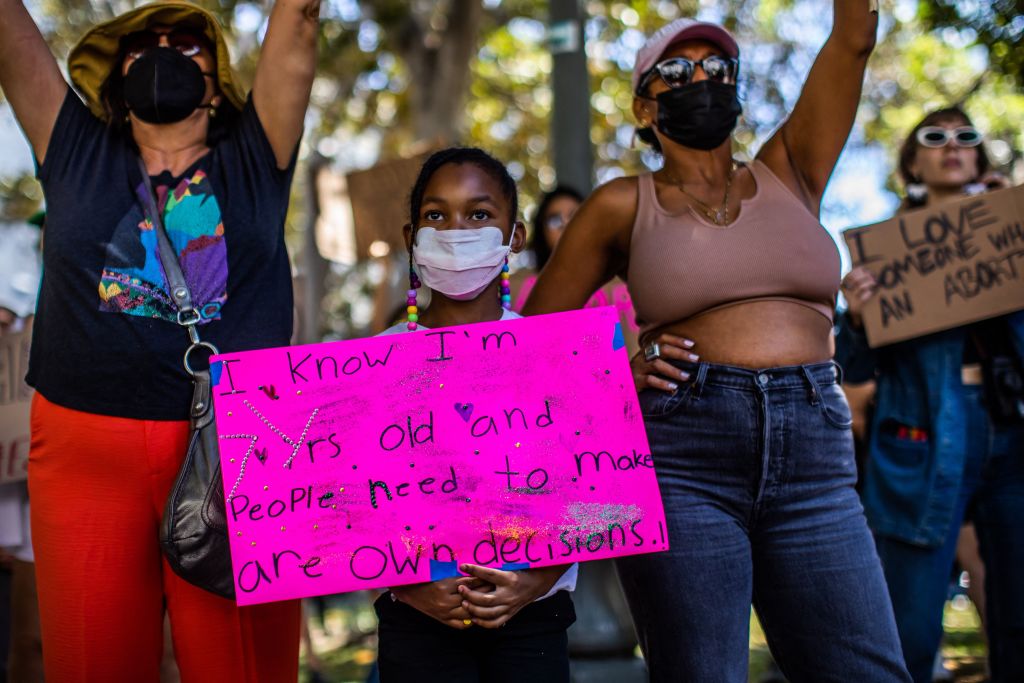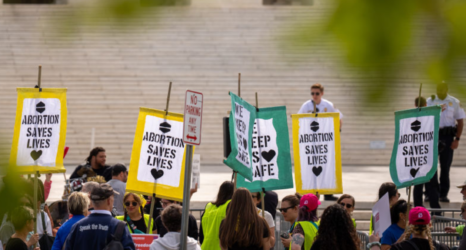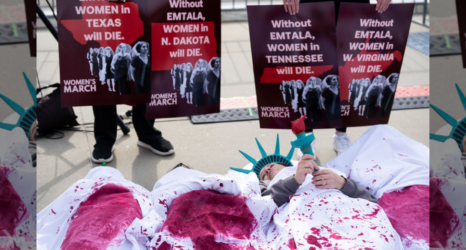
Although shocking to read, the story of the 10-year-old rape victim who was forced to leave her home state of Ohio to have an abortion in Indiana was not an isolated case. In fact, that very week in Ohio, at least three girls aged 10-11 years old were in the same situation—all pregnant, and all unable to receive care in Ohio.
It’s a nationwide problem: Over 4,000 girls age 14 and under become pregnant in the United States each year, and in Ohio half of these pregnancies have ended in abortion. Without access to abortion (which is now illegal in Indiana as well), many of these girls will be forced to carry their pregnancies to term—a tragic scenario for a child and for our society.
Ages 10-14 are the years of middle childhood and early adolescence. Children at this age are starting to develop identities separate from their families. They are vulnerable to peer pressure and are at risk for depression. Their bodies are changing and many develop insecurities as they are starting to compare themselves to their peers. There isn’t much written on pregnancy during these years because, by our society’s expectations, it isn’t supposed to happen. When it does, it is a tragic story often involving rape and incest; a story typically swept under the rug.
Adolescent pregnancies are inherently higher risk for a multitude of reasons. Immature brains, societal shame, and barriers to access lead to inadequate and delayed care. Pregnant teens are more likely to have poor nutrition, use drugs, and be victims of violence and abuse. Pregnancy care may be delayed, including at the time of delivery, as many states do not have laws regarding a minor’s ability to consent for their own medical treatment during pregnancy. In other words, a pregnant adolescent’s parent may have to sign consent for major interventions such as a cesarean section or an epidural. In some cases, this confusion can permit a pregnant adolescent’s parent to deny access to obstetric pain management as a way to spitefully “teach them a lesson.”
Pregnancy itself will put anyone’s health at risk. For teenagers, the risks are greater and include a higher likelihood of stillbirth and maternal death. Preterm labor, postpartum hemorrhage, preeclampsia, HELLP syndrome (multisystem organ dysfunction of pregnancy) and anemia are all more likely to occur in adolescent pregnancies. Teen mothers are at higher risk for C-sections—often unnecessarily performed—as provider concerns for an immature pelvic structure and inability to accommodate a vaginal delivery are likely not true based on recent evidence.
There is also evidence that negative health effects of teenage pregnancy and motherhood persist over a woman’s lifetime. A large survey of women over the age of 40 found that those who gave birth during adolescence had lower physical health scores compared to both women who became pregnant as a teenager but did not give birth and those who had unprotected sex as teenagers but did not become pregnant. Clearly, teen motherhood adversely affects physical health, which may be related to the physical stresses of childbirth and economic impact of raising children at such a young age. Studies have also shown the detrimental economic impact of teen pregnancy in respect to higher education and financial insecurity.
The fate of a baby born to a teenage mom is itself a story of confusion and heartache. While the pregnant adolescent is not considered mature enough to make her own medical decisions, upon giving birth she becomes responsible for the baby. If the young mother struggles to care for her baby and her family is not supportive (or even hostile), child protective services may intervene and potentially remove the young mother and her baby from their home—or they may remove just the baby.
For teen mothers who are themselves foster children, the scenario is even more tragic. An unforgivable statistic—25 percent of infants born to minor foster mothers are removed from their mother’s custody within the first week of life. These infants are not necessarily taken due to concern for an inability to parent, but rather because of a lack of foster homes that can accommodate both mother and child. Half of teen foster mothers lose custody of their children before the child’s 2nd birthday.
It is a cruel society that forces a young girl to birth a child and then takes that child away. We are calling on our communities to urgently stand in support of abortion access, in particular for these young girls who are not physically, emotionally or psychologically ready to become parents, and who if forced to give birth will suffer irreparable harm.
U.S. democracy is at a dangerous inflection point—from the demise of abortion rights, to a lack of pay equity and parental leave, to skyrocketing maternal mortality, and attacks on trans health. Left unchecked, these crises will lead to wider gaps in political participation and representation. For 50 years, Ms. has been forging feminist journalism—reporting, rebelling and truth-telling from the front-lines, championing the Equal Rights Amendment, and centering the stories of those most impacted. With all that’s at stake for equality, we are redoubling our commitment for the next 50 years. In turn, we need your help, Support Ms. today with a donation—any amount that is meaningful to you. For as little as $5 each month, you’ll receive the print magazine along with our e-newsletters, action alerts, and invitations to Ms. Studios events and podcasts. We are grateful for your loyalty and ferocity.
Up next:





